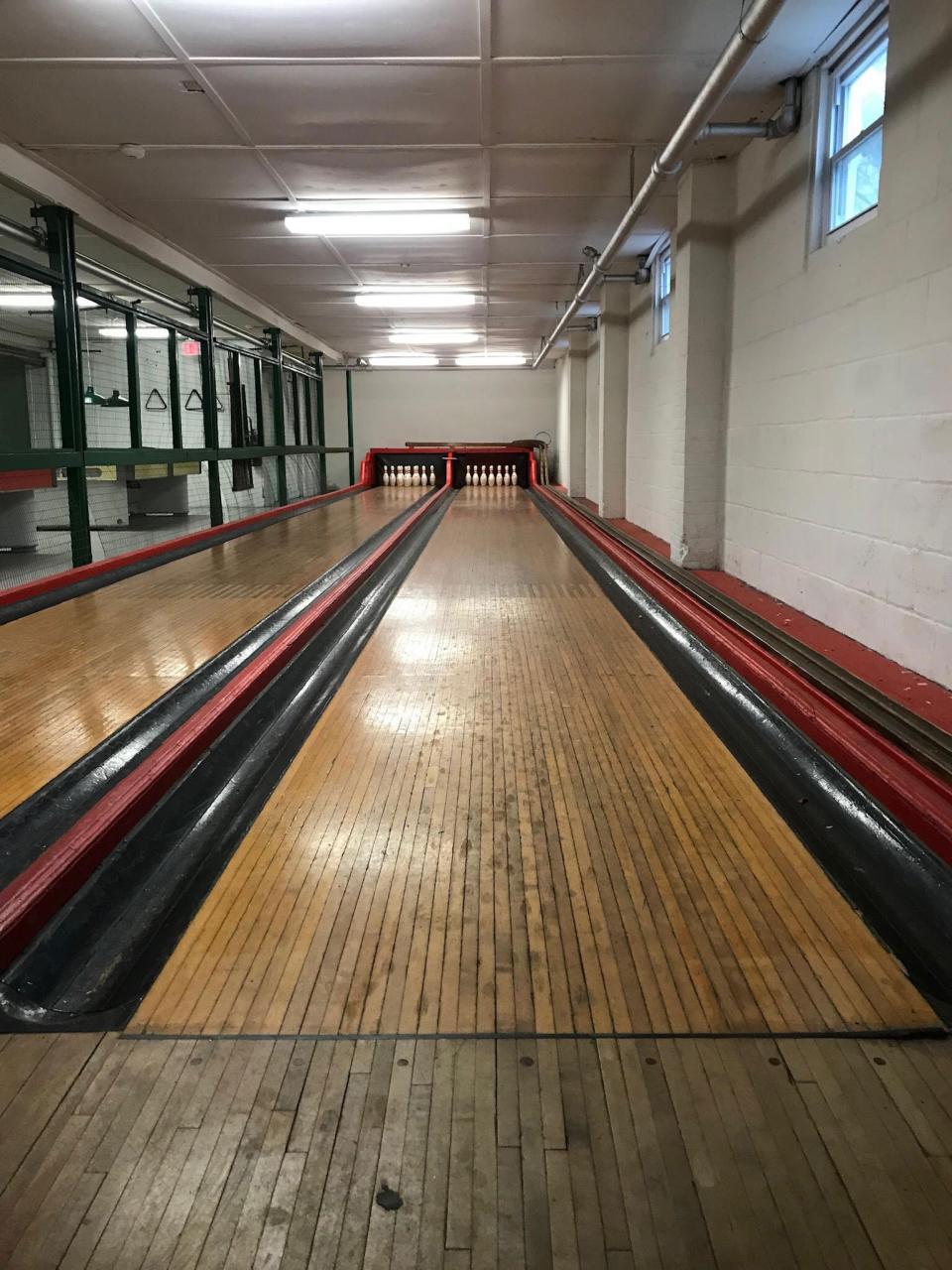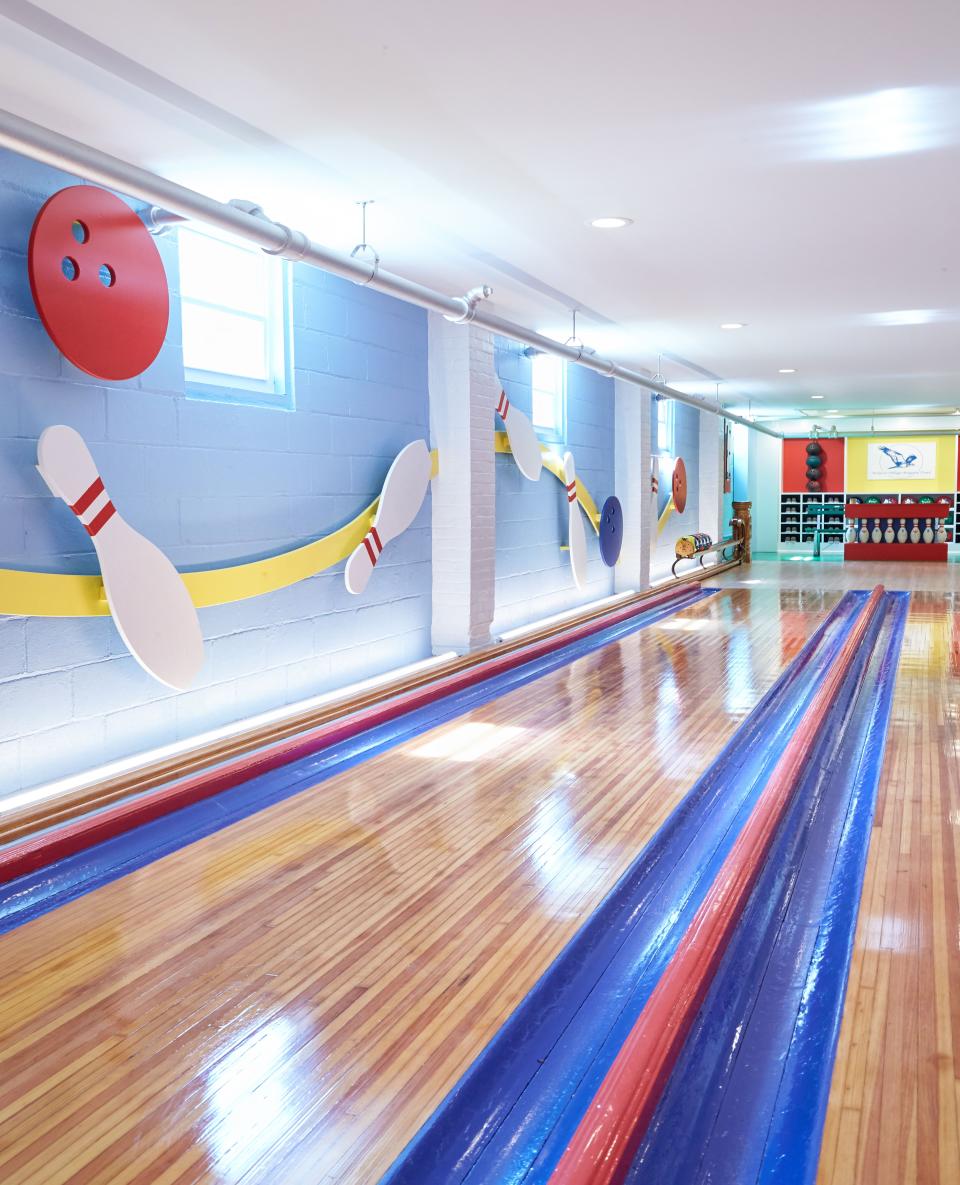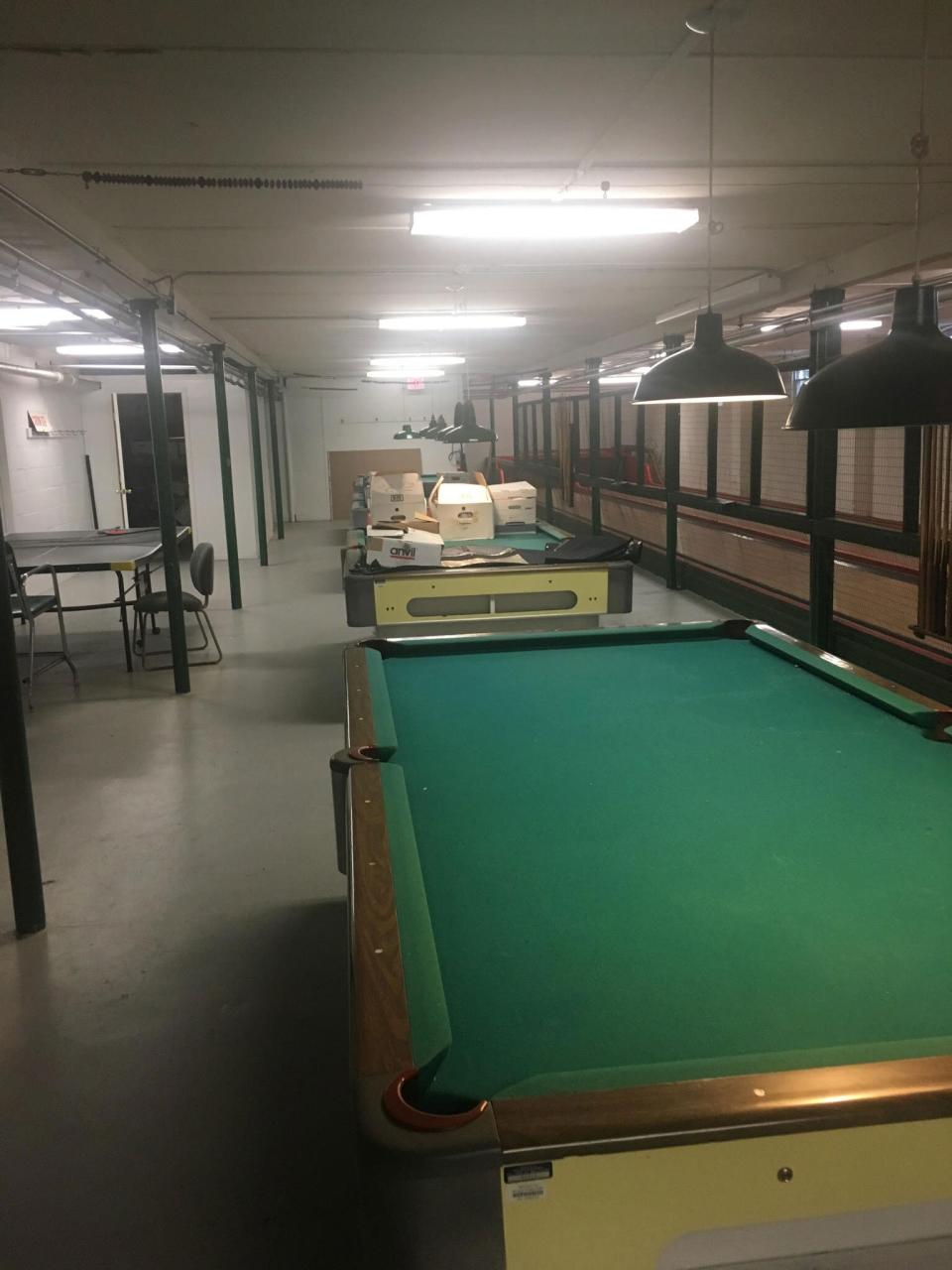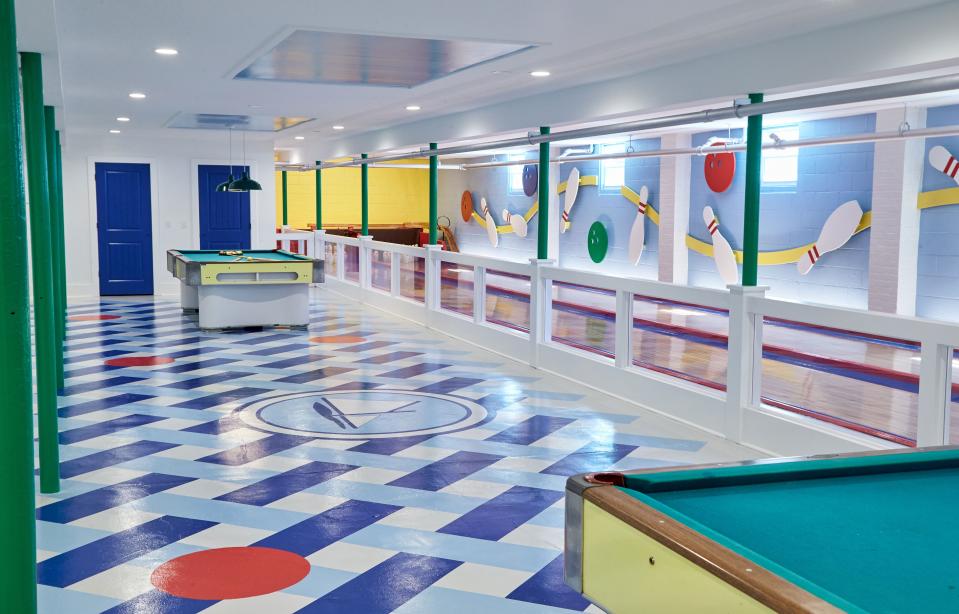An Interior Designer Drastically Transformed This Long Island Bowling Alley
For New York–based interior designer Phillip Thomas, the renovation of the Bellport Community Center’s bowling alley is a project that brims with nostalgia. He’s been visiting the charming village since he was just four years old, and when the opportunity arose to restore the 90-year-old alley, he knew it was one he couldn’t pass up.
“I sit on the board of a not-for-profit 501(c)(3) of the Bellport Village Program Fund, and every year we try to help the village execute projects they don’t necessarily have the budget for,” he says. The entire committee saw the promise in renovating the basement recreation area and bowling alley, and asked Phillip—the only designer on the committee—to oversee the entire project.
It’s easy to fall in love with the charm of Bellport, located on Long Island’s Great South Bay, which the designer states is a “wonderful town with a year-round community, with its own natural private beach and bucolic ferry. It’s also been rated one of the top 10 seaside villages in the U.S.” Throughout the year, it’s common to see residents driving to the marina at the end of Bellport Lane paying “homage to the Great South Bay,” he adds.


But the community center, which was home to town meetings, the village theater, and the children’s summer camp, had fallen into disrepair, and Phillip realized it was time to revamp this important mainstay of the community.
“I am the youngest of three and remember going down to there in the mid-1980s,” he says. “I remember how big a part of the summer community that alley was.”


The renovation began in January 2019 and was completed in May, just in time for Memorial Day Weekend, “to draw a lot of the year-round and summertime residents,” but it would be quite the challenge. Originally built in 1929, the lanes were damaged—pieces of the polyurethane were missing so balls couldn’t roll straight down the lanes, and the paint hadn’t been touched in decades.
Alongside fixing the obvious, one of the greatest challenges was creating an aesthetically pleasing divider between the alley and the main recreation area. The existing divider was the “most mangled pile of chicken wire and wood I had ever seen, and really presented an obstacle of the room acting as one large space,” he says. The ceiling was also not up to code, and had to be upgraded.


When it came to the design, color palette was very important, as the space lacked natural light. To give the illusion of there being light inside the alley, he “took cues from the existing yellow tiles in the bathrooms,” continuing the primary feel with red, green, and blue. Plus, he added in some unexpected Bellport love via the flooring. “The light and dark blues represent the surf on the bay, and the red circles represent the buoys,” he says. The floors were hand-painted by the village’s maintenance crew to save on money, while the highway department helped with heavy lifting.
To add visual texture and depth to the space, Thomas added cascading bowling balls and pins on the wall across from the entrance. It’s backlit with LED lights to make it seem like each piece is popping off the wall.
“It was truly a treat to get to see people I don’t know or those I haven’t seen in years enjoying the space," says Phillip. "It makes it all worthwhile.”

Originally Appeared on Architectural Digest

